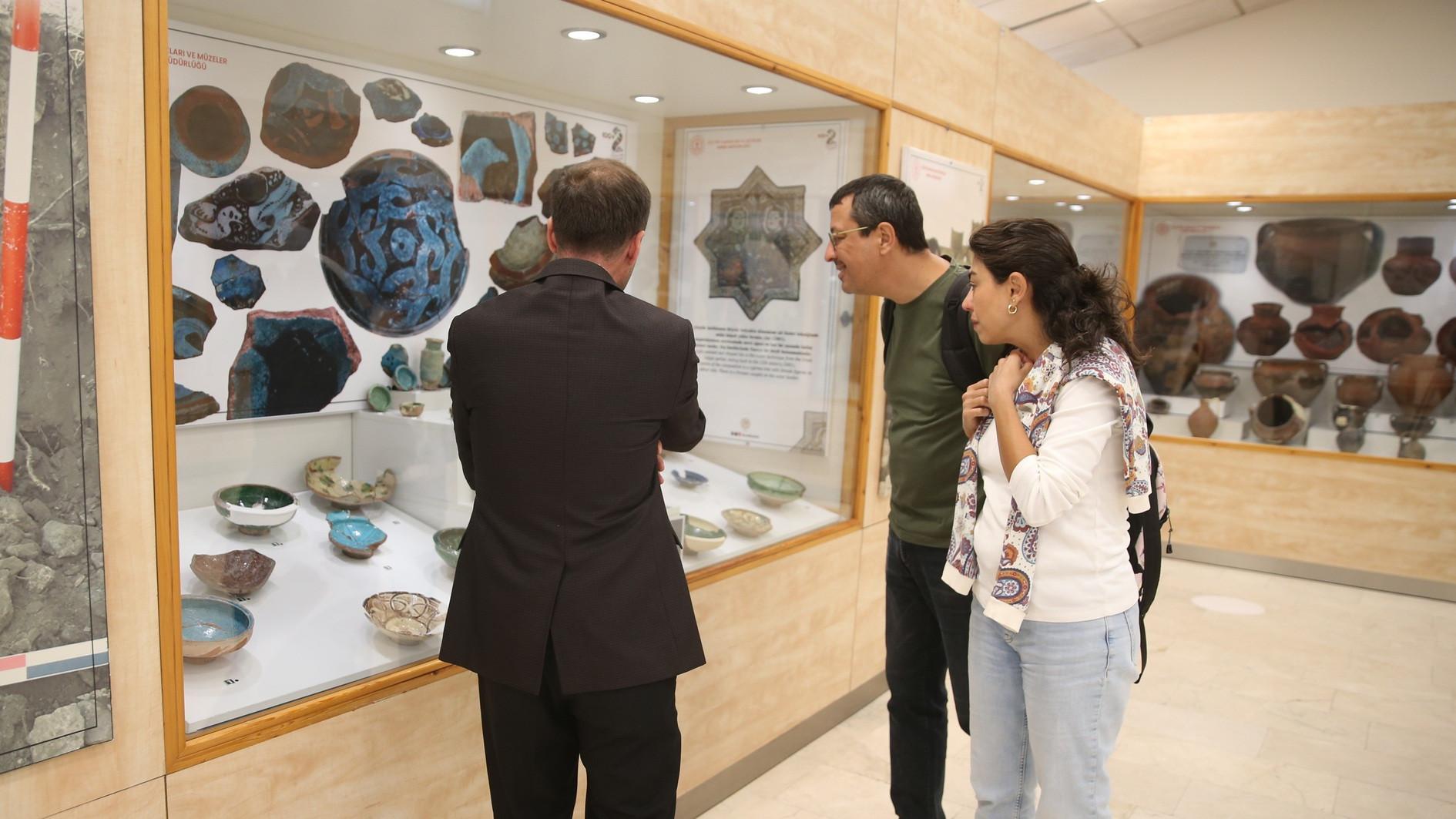
Glazed ceramic artifacts unearthed during excavations at the Ani Ruins, a UNESCO World Heritage site in the eastern Turkish province of Kars, have been put on public display for the first time.
Located between two deep gorges carved by the Arpaçay River along the Türkiye-Armenia border, Ani was ruled by the Bagratid dynasty between 884 and 1045 and by the Byzantines from 1045 to 1064 before being conquered by Sultan Alp Arslan on Aug. 16, 1064.
Once a vibrant city that hosted 23 civilizations throughout its history, Ani is home to an extraordinary array of architectural and cultural treasures including mosques, churches and cathedrals. Its strategic location as a gateway from the Caucasus into Anatolia gives it added historical significance.
Excavations at the site continue to bring to light a variety of artifacts. Among them are glazed ceramics featuring intricate designs, which are now on view at the Kars Museum of Archaeology and Ethnography.
The exhibition consists of two display cases filled with ceramic fragments featuring botanical and geometric motifs. The pieces will remain on display throughout the year.
Hakim Aslan, acting director of the Kars Museum of Archaeology and Ethnography, told Anadolu Agency that the glazed ceramics are being exhibited for the first time and have attracted strong interest from visitors.
“We opened a dedicated glazed ceramics section in two of our display cases,” Aslan said. “Among the pieces are significant examples from the medieval period, dating back 900 to 1,000 years. The most remarkable are Seljuk-era glazed ceramics in tones of green and cobalt blue, featuring vegetal and geometric decorations, as well as human figures.”
Aslan noted that several Seljuk-era ceramics include unique iconographic elements.
“One of the most striking pieces depicts a pair of lovers, a common motif in palace iconography of the time,” he said. “We are exhibiting two such artifacts, one tile and one ceramic piece. The ceramic shows a ‘tree of life’ at the center, flanked by human figures, and is encircled by inscriptions in Persian and Arabic. The text includes lines of love poetry.”
Aslan also highlighted the presence of small glazed objects used in kitchens, including rare spice containers.
“Though rarely found, these utilitarian items are also glazed,” he said. “Since the opening of the exhibition, we’ve seen a notable increase in both domestic and international visitors. This has significantly boosted our visitor numbers and interest in the museum.”